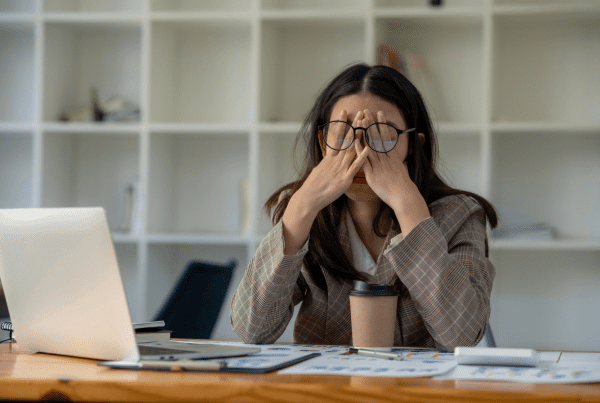A Response to Netflix’s 13 Reasons Why in the Context of Suicide Awareness and Prevention
September was Suicide Prevention Awareness Month. With the month recently passed, it’s important to carry the conversation about suicide forward in a safe and responsible way.
Popular shows, such as Netflix’s 13 Reasons Why, have sparked interest in the topic, which is useful in encouraging dialogue. But simply broaching the topic through pop culture is not enough – not without framing the issue carefully. The show’s sensationalism has arguably done more to harm the cause of suicide prevention than to help. With two seasons now available to stream and a third currently in production, positioning the conversation about suicide appropriately has become imperative.
But that’s not to say the show hasn’t also made some positive strides. The following is a list of things the show got right as well as where it fell short.
The Good
Helped push past taboos
Suicide is a difficult subject to discuss. The mere mention of it can feel like a breach of personal boundaries, as a result of the walls we inadvertently build out of politeness and respect for one another, and sometimes it can even feel accusatory.
13 Reasons Why did the bold thing of popularizing a taboo subject, and conversations have since become more commonplace. Since the airing of the first season of the show, suicide and mental health crisis hotlines have experienced unprecedented call volumes1, which suggests more people are self-identifying as being at risk.
Called national attention to the high school experience
As easy as it might seem to trivialize a teenager’s problems, high school can be a tough time. Teens encounter their fair share of challenges, including social pressure, microaggressions, bullying, and even sexual assault, and they do so at an age in which they might lack the experience and knowledge to help process the emotional repercussions of trauma.
By encouraging empathy around a group of young people within this social context, the show promotes the validation and concern needed to adequately address mental health issues for teens.
The Bad
Glamorized suicide
The show has unfortunately portrayed suicide as a revenge fantasy. Hannah Baker, the show’s protagonist, attributes her decision to take her own life to a select group of people through a series of cassette tape recordings. This is dangerous and irresponsible for at least two reasons: suicide does not provide vindication for the wrongs a victim has endured, and suicide is not the result of the actions of others.
The actual act itself is portrayed graphically and at length and becomes a force for positive change in the show’s high school community. It is the catalyst of honest conversation and moral accountability for the surviving characters. But suicide is not a “mic drop” moment as the story suggests. It is an acute mental disorder, and it must be treated as such.
Inaccurately represented the medical realities of suicide
People who are at risk of suicide are known to lose executive function and impulse control. Baker is depicted as a mastermind that is in complete control of the situation – despite the fact that she has already ended her life. Her recordings ring with conviction and tact, which is not normally characteristic of a person’s emotional state when at risk of suicide.
The cause-and-effect relationship between bullying and suicide is similarly uncharacteristic. In reality, there isn’t a single cause of suicide, and many who experience bullying are not actually at risk. Risk factors include unchecked mental disorders, a history of trauma or abuse, substance abuse, recent financial or relationship loss, lack of healthcare access – the list goes on.
Missed opportunities
Although the show has taken steps to include disclaimers and provide information and resources on suicide prevention, the actual story itself makes no similar effort through its narrative. In one scene, a teacher begins discussing the warning signs while the camera focuses on Clay Jensen, another main character, as he languidly drifts into a flashback sequence and the audience misses what the teacher was about to say. It may have been the producers’ intention to craft the scene this way to express Jensen’s emotional weariness after Baker’s suicide, but a real opportunity to provide useful information was lost.
Later on, in the first season, Baker visits the school counselor and alludes to intent to harm herself. The counselor responds so poorly that it might deter young viewers from seeking help for themselves. In all fairness, the show is trying to tell a story, and it relies on crisis moments such as this to drive the plot forward. But it missed an opportunity to include some elements of suicide prevention into its framework and to cast mental health counseling in a favorable light.
Arts and entertainment have always had material effects on public health – especially when targeting teenagers. In the 19 days following the release of the first season of 13 Reasons Why, suicide-related Google searches spiked 20 percent2, equating to roughly 900,000-1.5 million more searches than usual. By continuing the conversation about suicide in an honest and responsible way, the behavioral health community can continue to make progress, despite misrepresentation in mass media.
For the latest in other industry news, information, and content, click the button below to subscribe to our blog!
1. Netflix show 13 Reasons Why sparks increased calls to mental health helplines”, last modified April 17, 2017, http://www.abc.net.au/
2. “Did 13 Reasons Why Spark a Suicide Contagion Effect?”, last modified August 1, 2017, https://www.theatlantic.com/



